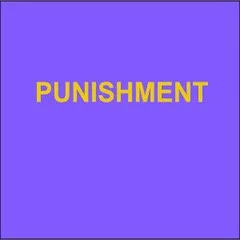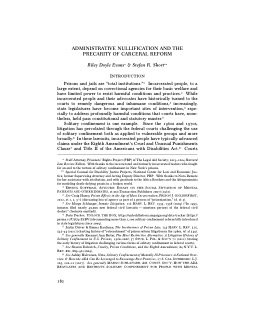By The Delaware Community Legal Aid Society, Inc. Disabilities Law Program
The Disabilities Law Program (DLP) of Community Legal Aid Society, Inc. (CLASI) serves as Delaware’s Protection and Advocacy (P&A) system, charged with protecting the legal rights of people with physical and mental disabilities. Under federal law, P&A systems have the authority to conduct monitoring and investigative activities in a variety of settings where people with disabilities live and receive services, including correctional facilities. Conditions in correctional facilities are of great concern to CLASI and to other P&A systems around the country, due to the overrepresentation of people with disabilities, including mental illness, in correctional settings. Research also suggests that the experience of incarceration, and of segregation or solitary confinement in particular, can cause mental health problems and also exacerbate existing mental illness. History of CLASI’s Interventions on Behalf of Incarcerated People with Mental Illness Held in Solitary Confinement In 2013, CLASI and the ACLU of Delaware became troubled by reports they were receiving about the placement of individuals with serious mental illness in solitary confinement, meaning that they were confined to cells for at least 22 hours per day, often for extended periods of time. After investigation, in 2015 CLASI, the ACLU, and Pepper Hamilton LLP filed a federal lawsuit, CLASI v. Coupe, against the Delaware Department of Correction (DDOC), which detailed concerns about the treatment of individuals with mental illness placed in restrictive housing environments, including solitary confinement. These concerns included minimal out-of-cell time, lack of access to mental health treatment, and conditions for individuals placed on suicide watch. The parties settled the suit in 2016, and DDOC agreed to make several changes related to the use of restrictive housing. These included: increased mental health staffing; minimum requirements for out-of- cell time; establishing that individuals could not be placed in disciplinary detention for more than 15 consecutive days; requiring a break of at least 15 days between disciplinary detention sanctions; and that no individual classified as seriously mentally ill could be placed in disciplinary detention for any period of time unless they presented an immediate danger and there was no reasonable alternative. The terms of the settlement were effective for five years and concluded in 2021. While the settlement was in effect, CLASI monitored DDOC’s progress by reviewing data, meeting regularly with DDOC leadership, and conducting on-site facility visits with an expert monitor. CLASI’s Recent Monitoring of Correctional Facilities and Treatment of Individuals with Mental Illness In the spring of 2023, CLASI retained two experts to assist its staff in conducting updated monitoring, in order to assess current conditions at DDOC facilities with a specific focus on restrictive housing units, including designated mental health units and units housing individuals in disciplinary detention. CLASI’s monitoring found areas where DDOC appeared to remain in compliance with the policy changes agreed to as part of the CLASI v. Coupe settlement. It also found areas where additional progress had been made, particularly in the implementation of Residential Treatment Units (RTUs) for individuals with mental illness at two facilities. However, the monitoring also identified several major areas of concern. These areas included: suicide prevention practices, the need to expand RTUs, the continuum of mental health services and crisis intervention practices, substance abuse treatment protocols, and the use of punitive point and classification systems and privilege sanctions as “backdoor” methods to restrict and isolate incarcerated individuals, now that more traditional disciplinary detention practices, such as solitary confinement, have been reformed. CLASI is particularly concerned with the need for increased transparency and data sharing to enable it to effectively assess current conditions and carry out its obligations as the P&A. During the monitoring process, DDOC unfortunately denied many of CLASI’s requests for more specific data and information, which made it difficult to assess how DDOC’s current practices compare with those reported while the CLASI v. Coupe settlement was in effect. There is a particular need for more transparency with respect to DDOC’s practices surrounding the use of points-based classification, privilege restrictions, and administrative segregation. CLASI urges DDOC to review the findings and specific recommendations in this report, summarized below, to ensure that incarcerated Delawareans with mental illness are treated fairly and humanely. We also urge DDOC to increase transparency by collecting and making available data regarding the length of restrictions, use of point-based classification, privilege restrictions, and administrative segregation in its facilities.
The Delaware Community Legal Aid Society, Inc, 2024. 25p.



















